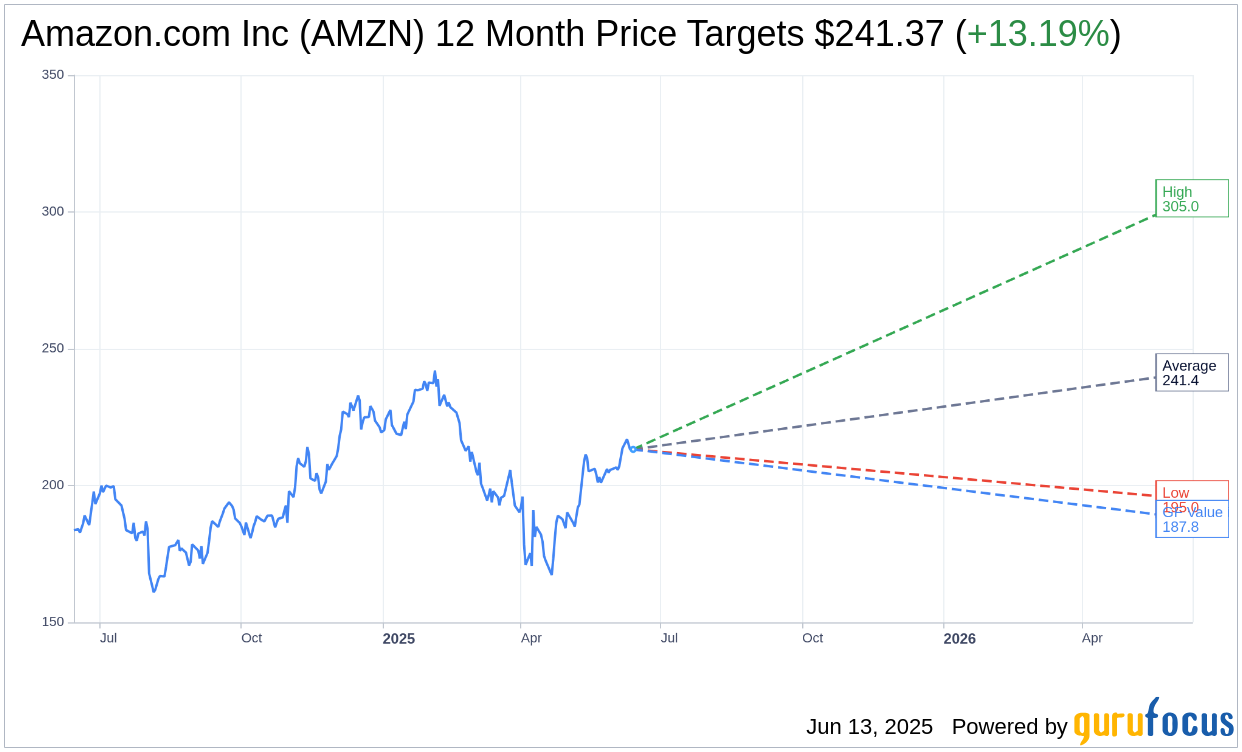Key Takeaways:
- Amazon (AMZN, Financial) explores launching its own stablecoin to innovate payment systems and reduce fees.
- Analysts predict an average price target of $241.37 for AMZN, showing potential upside.
- Amazon is rated "Outperform" with a consensus recommendation score of 1.8.
Amazon (AMZN) is at the forefront of a potential shift in its payment infrastructure by considering the introduction of its own stablecoin. This strategic move aims to revolutionize how transactions occur on its platform, potentially reducing reliance on traditional banking intermediaries and thus lowering associated fees. The launch is contingent on the passage of the Genius Act, which could significantly disrupt traditional payment networks, primarily dominated by industry giants like Visa and Mastercard.
Wall Street Analysts' Projections

In the financial landscape, Amazon.com Inc (AMZN, Financial) remains a subject of keen interest. According to the projections from 67 analysts, Amazon's stock has an average price target of $241.37 over the next year. This estimate spans from a high of $305.00 to a low of $195.00, reflecting diverse analyst perspectives. The average target suggests a promising upside of 13.19% from its current market price of $213.24. For a deeper dive into these projections, visit the Amazon.com Inc (AMZN) Forecast page.
Brokerage Recommendations
Amazon.com Inc continues to garner an "Outperform" rating based on the consensus from 73 respected brokerage firms, with an average recommendation score of 1.8. Within the rating scale, 1 represents a Strong Buy, while 5 suggests a Sell. This rating reflects confidence in Amazon's potential to surpass market expectations and deliver shareholder value.
GuruFocus Valuation Insights
From a valuation perspective, the GF Value for Amazon.com Inc (AMZN, Financial) is estimated at $187.83 over the next year, indicating a possible downside of 11.92% from its current trading price of $213.24. The GF Value represents an estimation of the stock's intrinsic worth, calculated by analyzing historical trading multiples, past business growth, and future performance forecasts. To explore detailed valuation data, please refer to the Amazon.com Inc (AMZN) Summary page.
